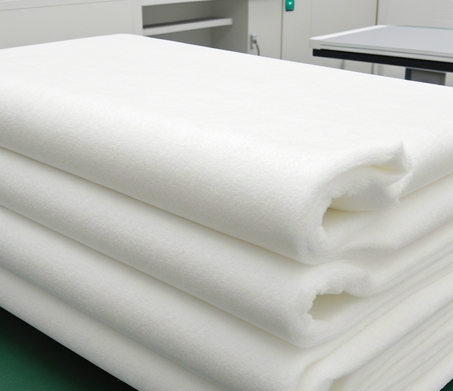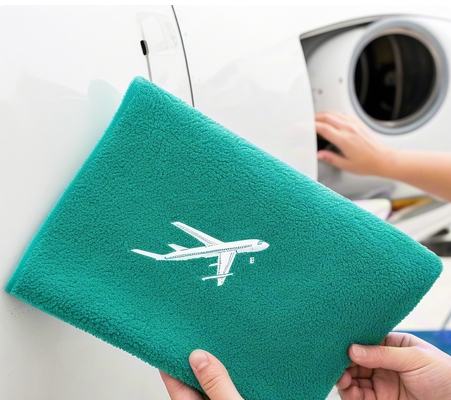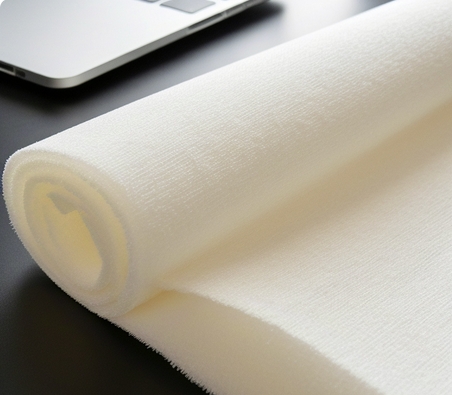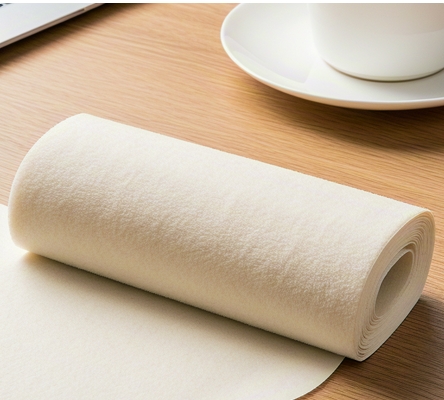Language

In the field of pharmaceutical and biotechnology, the cleanliness control of equipment and production environments is the core link in ensuring drug safety. The process called cleaning verification in professional terms is essentially to verify whether the surface residues of the equipment are below the acceptable limit through a systematic method. This critical procedure can effectively prevent the risk of cross-contamination between batches. Taking the dental anesthetic production line as an example, if the active ingredients of the preamble product are not completely removed, it may lead to major quality accidents such as abnormal drug concentration in subsequent batches.
For surface sampling of stainless steel equipment, the internationally accepted TOC (total organic carbon) detection method requires the use of professional cleaning verification swabs. According to FDA technical guidelines, a sterilized wipe cloth made of 100% double knitted polyester can achieve a residue recovery of more than 95%. Its unique three-dimensional fiber structure can effectively capture 0.1μm-level particles, and it is combined with a super-strong liquid absorption of 400ml per square meter. It is especially suitable for the verification of cleanliness of production equipment for protein biological products.
In a sterile operating environment, the sterilization treatment standards of cotton swabs directly affect the detection accuracy. The polyester cotton swab after high-pressure steam sterilization (maintained for 30 minutes under 121°C/15 psi) was verified by a third-party laboratory to show that the microbial load is<1CFU/cm². In contrast, ordinary cotton swabs will experience fiber carbonization under the same sterilization conditions, resulting in an increase in TOC background value by 23%-35%, which highlights the importance of professional cleaning tools selection.
Low residual characteristics are the core technical indicators for cleaning and verification of cotton swabs. Taking the verification data of a multinational pharmaceutical company as an example, a 0.25×0.66-inch polyester cotton swab only releases 0.05 mg of soluble substance in boiling ethanol, which is equivalent to 1/8 of the residual amount of traditional cotton swabs. When used for cleaning verification of high performance liquid chromatograph inlets, this value fully meets the strict requirements of "detection limit not exceeding 1/1000 of the therapeutic dose" in the ICH Q7 guidelines.
It is worth noting that the solvent tolerance of cleaning verification cotton swabs directly affects the detection reliability. The polyester material remains structurally intact during the 72-hour acetone soaking test, while nylon cotton swabs will swell and deformation under the same conditions. This characteristic allows it to accurately collect hydrophobic residues and avoid false positive results caused by the decomposition of swab materials. Just as precision balances require regular calibration, the performance verification of cleaning tools also requires strict quality control system support.
Industry practice shows that a complete cleaning verification plan should include six major modules, including equipment material evaluation, cleaning agent selection, and sampling method verification. Among them, cotton swab sampling method has become the first choice method for more than 90% of solid preparation manufacturers due to its advantages such as convenient operation and controllable cost. By establishing standardized cotton swab sampling operating procedures, a biopharmaceutical company successfully shortened the cleaning verification cycle from 14 days to 5 days, and at the same time reduced the deviation rate of the test results to below 0.3%.
3. Eliminate the hidden dangers of adhesive pollution in HPLC analysis. In the quality testing system of the pharmaceutical industry, high-performance liquid chromatography (HPLC) is a precision analysis tool, and its detection results are directly related to the determination of drug purity. Professional laboratory research has found that when the acrylic adhesive used in traditional cotton swabs is exposed to organic solvents, trace oligomers may be precipitated, which may form interference peaks in the HPLC map. A case from an international pharmaceutical company shows that the use of a cotton swab containing adhesive will increase the baseline noise value of chromatographically 15%, seriously affecting the accurate amount of impurities of grade 0.01%.
The non-bonded cotton swab for clean rooms adopts a hot melt welding process, which melts and combines the polyester fiber with the PP handle by precisely controlling the temperature (185±5℃). This innovative process not only avoids the introduction of chemical adhesives, but also reaches the industry standard of 12N/mm². Experimental data show that after soaking this type of cotton swab in the acetonitrile-water system for 2 hours, no characteristic interference peaks appeared in HPLC detection to ensure the accuracy of trace contaminants detection.
4. Key technologies for particle control in TOC detection. In the cleaning verification of biopharmaceutical equipment, the sensitivity of the total organic carbon (TOC) detector can reach ppb level, which puts strict requirements on the cleanliness of the sampling tool. The fiber debris that traditional cotton swabs may release during sampling have been confirmed by laboratory simulation tests to cause a deviation of 5-8% of the TOC reading. An animal vaccine manufacturer once failed to verify the entire batch of equipment due to cotton swab particle contamination, and the direct economic loss reached 370,000 yuan.
The pre-cleaned polyester cotton swabs made in ISO Class 5 clean room are precisely controlled to 12.7mm×25.6mm (tolerance ±0.1mm). After three ultrapure water rinsing and vacuum drying, the particle release per unit surface area decreased to 1/20 of traditional products. Accelerated aging experiments show that after the cotton swab is stored at 40℃/75% RH for 12 months, the soluble matter in the alcohol extract is still less than 0.38 mg/pin, fully meeting the USP
5. The process of innovative hot-pressed cotton swabs breaks through the hot-pressing molding technology. Through precise mold design (tolerance ±5μm) and pressure control (2.5MPa), polyester fibers form a stable three-dimensional mesh structure without any chemical additives. Compared with chemical bonding, this physical bonding method reduces the total organic volatiles (TVOC) of the product by 92%. SEM analysis showed that the orderly arrangement of fibers on the surface of the hot-pressed cotton swabs increased by 40%, significantly reducing fiber shedding during the sampling process.
In the verification experiment, the surface sampling of the equipment was sampled for 50 consecutive times with a hot pressing process cotton swab. The RSD value of the TOC test result was stable within 2.1%, which increased the data consistency by 3 times compared with traditional products.
This product has passed the ISO/IEC 17025 certification laboratory verification, and its total organic carbon (TOC) background value is stable below the 50μg/L threshold, fully meeting the strict requirements of cleaning verification in the pharmaceutical industry. This breakthrough cotton swab uses double-gradient braiding technology, and the precisely arranged polyester fibers form a sponge-like three-dimensional capture structure, which can effectively adsorb more than 90% of surface contaminants during the sampling process.
In terms of pollutant collection mechanism, the double-layer braided head locks the particles in the fiber gap through capillary action principle. Laboratory data shows that it still maintains an 82% retention efficiency for particles with a diameter of less than 5 μm. Independent test reports confirmed that the design increased the recovery rate of target analytes during the elution stage to 97.5±2.3%, significantly better than traditional nylon flocking cotton swabs.
The rod body is injection molded with all polypropylene (PP) material. Its chemical resistance index is verified by the ASTM D543 standard and can withstand extreme solution environments of pH 1-13 for up to 72 hours. In the GMP clean room environment, the operator only needs to accurately break the sampled cotton swab head into a 15ml sterilized centrifuge tube. This integrated design reduces the risk of sample contamination by 67%.
In terms of environmental protection performance, medical-grade packaging materials have passed the bioreactivity test of USP
Tags:
RELATED RESOURCES

Class 100 dustless cloth technical specifications: ISO standards and ultrasonic edge sealing process
Technical specifications and in-depth interpretation of manufacturing process of a hundred-level dust-free clo......
More

How Aircraft Wipes Achieve Zero-Contamination Aircraft Engine Cleaning
Wipe star aviation-grade cleaning consumables are manufactured using innovative hydros pinning process, and th......
More

7 Questions on Selecting Ultrafine Dust-Free Wipes: Comparative Analysis of Ultrafine Fiber Cleaning
Comparative analysis of ultra-fine dust-free cloth and ultra-fine dust-free cloth: professional selection guid......
More

The difference between dust-free paper and wiping paper is revealed. 15 years of experience in the f
In the field of industrial cleaning consumables, dust-free paper and wipe paper are two core products often ca......
More
Related Products
Room 101, Building 1, Angeer Factory, No.4, Hetian Road, Shatian Community, Kengzi Street, Pingshan District, Shenzhen, Guangdong, P.R. China 518122
info@wipestar.com
+86-755-89616775
+86-755-89616773
Related Products
RELATED RESOURCES

Class 100 dustless cloth technical specifications: ISO standards and ultrasonic edge sealing process
Technical specifications and in-depth interpretation of manufacturing process of a hundred-level dust-free clo.........
More

How Aircraft Wipes Achieve Zero-Contamination Aircraft Engine Cleaning
Wipe star aviation-grade cleaning consumables are manufactured using innovative hydros pinning process, and th.........
More
WIPESTAR
微信官方公众号